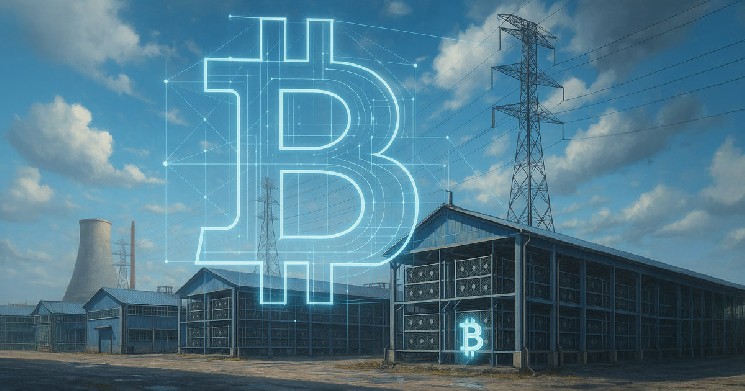Under are visitor posts and opinions from Armando Aguilar, head of capital formation and progress at Terrahas.
Whereas ETFs might dominate the headlines, the true architect of Bitcoin's liquidity is that miners quietly construct their steadiness sheets. Since half of April 2024, the function of the miners has shifted from pure producers to systemic stabilizers. Miners are making efforts to lock in Bitcoin Native Finance (BTCFI) whereas establishments have a good time the inflow.
This text explores how miners are rising as monetary actors, how steadiness sheet methods are deployed, and the BTCFI infrastructure continues to be missing for this evolution to achieve success.
From hashrate to steadiness sheet: post-harving pivot
Half of 2024 lowered block rewards and tightened margins throughout the trade. In consequence, many miners needed to restructure their companies not solely to outlive, but additionally to handle their capital extra precisely. Promoting block rewards out there is not content material, miners have begun to behave like the company finance ministry: timing BTC gross sales, safety reserves, and constructing monetary buffers.
As of mid-2025, statistics present that Bitcoin Miner has 104,500 BTC (roughly $12.7 billion), whereas the company Treasury Division added 159,107 BTC within the second quarter alone. What seems to be a passive “hadling” is, the truth is, an intentional fluidity technique. This reduces publicity to short-term volatility in the long run.
This shift is in step with the aggressive progress of the community scale. By mid-2025, Bitcoin hashrate had skyrocketed above Th/s of 970 million, reaching a year-over-year price of round 60%. As miners increase their operations, additionally they increase their monetary publicity and deal with steadiness sheet administration strategically in addition to hashrate optimization.
I've been witnessing a full cycle pivot. Miners are usually not merely producing bitcoin, they’re actively shaping capital markets.
Ministry of Finance's Rated Mining: Three Pillars of Technique
- collateral: Miners are funding their companies in opposition to BTC Holdings, moderately than diluting equity. This method permits for tactical spending with out abandoning long-term publicity.
- timing: Some firms are actually treating BTC gross sales like macro buying and selling, sustaining a recession or making income throughout rallies. These are well-thought-out structured exit methods primarily based on clear targets and market indicators, not knee actions.
- Fluidity Buffer: Miners don’t function wages starting from pay to pay. Many have constructed BTC reserves as a cushion for market stress, giving respiratory chambers throughout community expenses and hash competitors spikes. Public mining, which maintains clear BTC holdings and avoids pressured gross sales, is commonly seen as extra secure, strategic and considered in accordance with institutional expectations.
Naturally, half of 2024 didn’t create this concept, however actually accelerated it. Since 2024, these fiscal methods have turn out to be needed for survival, not simply choices.
Signaling Energy: When miners transfer by way of the market
Miners are starting to deliberately ship indicators to the broader ecosystems. Holding BTC is greater than only a perception in present protocols. That's the message: “This asset is essential and we handle it accordingly.”
Markets take notice when giant public miners gradual gross sales. Their actions now have an effect on sentiment and pricing, simply as Central Financial institution adjusts rates of interest. This dynamic was beforehand a website of trade, however not existed.
At present, some international locations are investigating BTC for strategic preparation. Chainalysis revealed a report on the topic earlier this 12 months, mentioning the US, Czech Republic, Switzerland and others amongst distinguished supporters of the thought.
In the meantime, key names like Saylor's MicroStrategy and Marathon Digital have amassed and disclosed BTC positions with the identical transparency anticipated of institutional asset managers.
Merely put, when miners behave just like the Ministry of Finance, the mining itself modifications to institutional capital administration, setting the tone of Bitcoin's monetary maturation as a worldwide asset. Whether or not the headline displays this or not, that's precisely what we're seeing proper now.
BTCFI Hole: Infrastructure continues to be catching up
Nevertheless, whereas miners are mature, BTCFI stays fragile. The infrastructure to help this monetary class continues to be underdeveloped.
The settlement stays gradual, and affirmation delays restrict complexity. The fluidity stays silent all through the fragmented protocol with minimal changes. Devices are sometimes primarily based on belief and there’s a lack of demand for impartial BTC native techniques.
The mission is continually experimenting. Whereas practice-free lending protocols, BTC-backed stubcoins and hashrate forwards, most of those instruments are within the early levels, removed from wider adoption.
This hole between mature miners' habits and undeveloped protocol infrastructure is harmful. The stabilization pressure could also be transformed to some extent of failure with out being resolved. If the BTCFI stalls, miners can lose simply as credibility as their function turns into important.
So, right here we want the precise infrastructure:
- Cross-protocol interoperability permits miners to effectively allocate capital between platforms.
- A strong Oracle that displays true market costs and mining inputs with out operational danger.
- An incentive mannequin that rewards transparency and penalizes extraction habits.
With out these, sanctuaries aimed toward stabilizing the system might turn out to be systematic debt…
Conclusion: Acknowledge your function or put together to fail
Miners didn't search this function, however they stepped into it. In a system with out a central financial institution, somebody has to arrange the ground. At present, it’s miners who maintain reserves, handle dangers, and act with systematic foresight.
If BTCFIs don’t mature, it isn’t due to a scarcity of miners. That's as a result of they refuse to acknowledge the monetary infrastructure that the ecosystem had already constructed up, and so they maintain all of the actors collectively.
Pull coat:
“Bitcoin turns into institutional when miners behave just like the Treasury, and that's precisely what's taking place.


